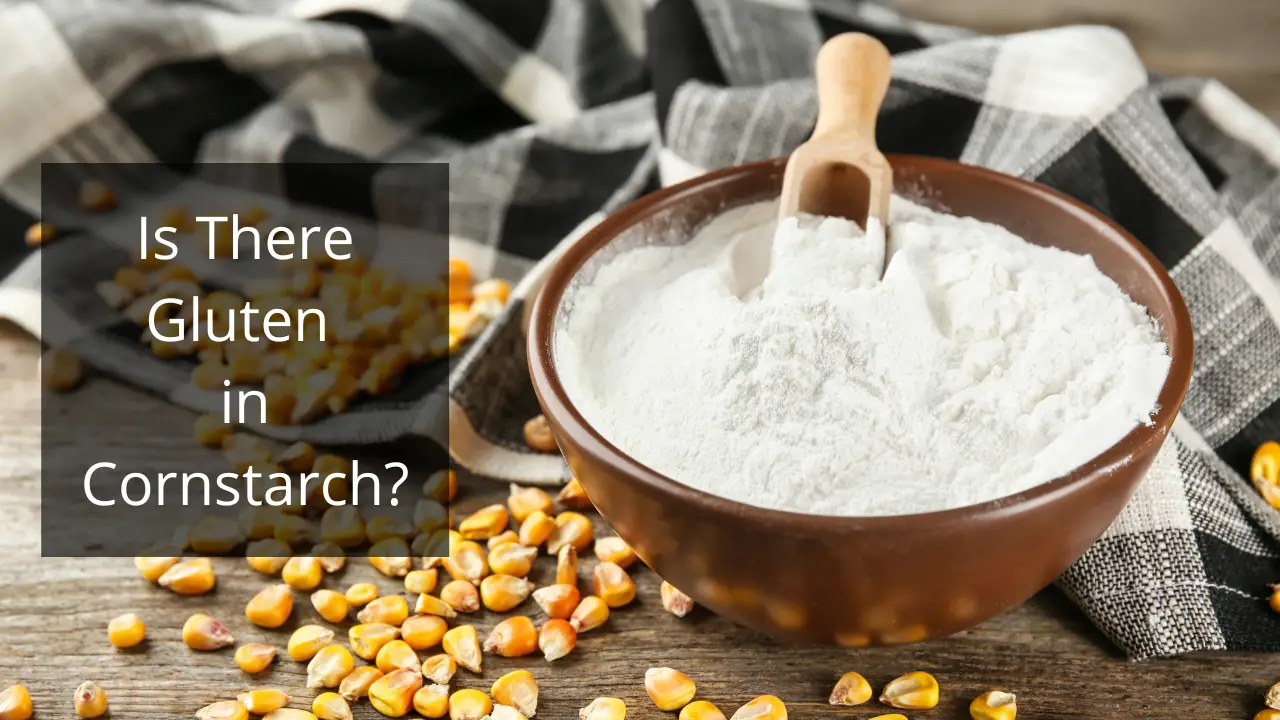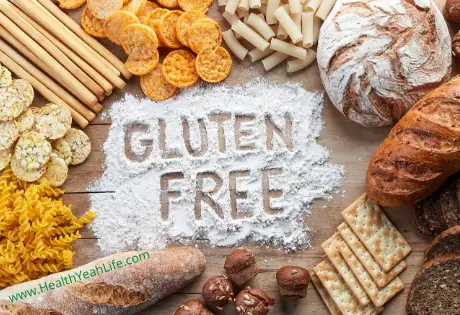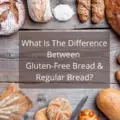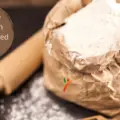With the increasing number of those diagnosed with celiac disease and gluten sensitivity, most people have become mindful grocery shoppers. Your doctor could have advised you to stay away from gluten, or you're experiencing symptoms after eating it.
Whatever the reason, you'd want to know if your everyday kitchen staples contain gluten. And since cornstarch is a widely utilized ingredient in numerous cooking and baking recipes, does it have gluten, too?
Let's find out, along with gluten-free brands, a recipe, and much more!
Gut health, gluten, and celiac disease
Our body contains several organ systems that work in harmony. Our digestive system is one of those organ systems without which survival is impossible. It is responsible for breaking down and digesting the meal we eat and extracting essential nutrients.
Several factors affect our gut health. For instance, certain foods are good for our gut, while some food items prove detrimental to gut health.

Gluten is a structural protein mainly found in wheat, barley, and rye. Over the years, gluten has been a source of numerous controversies and has people debating all over the internet.
Well, usually, gluten is just like a normal protein. It holds the grains together and helps them maintain their shape while also benefiting our bodies. But, sometimes, gluten can do more harm than good and wreak havoc in our gut.
The deciding factor is whether you have celiac disease or not. It is defined as an autoimmune disorder in which the patient's immune system starts to attack the body.
What happens is that whenever you eat gluten, your immune system identifies it as a harmful agent. Hence, an immune response is initiated in which the antibodies attack not only gluten but also damage our small intestine.
Whenever a celiac patient eats gluten, their gut is damaged, and they experience symptoms such as bloating, diarrhea, and cramps. If there is a continuous gluten intake, the patients may even suffer from anemia, skin diseases, and weight loss.
Some people have developed dark circles under their eyes. Hence, celiac patients need to know whether the food item they're about to eat contains gluten.
But, before we get to whether cornstarch contains gluten or not, you might be wondering…
What is Cornstarch?
Cornstarch is a carb derived from corn. Or, to make things more complicated, it is the endosperm acquired from corn kernels. When you remove the tough shell of a corn kernel, you have a soft, white, starchy segment.
If you haven't seen cornstarch before, keep the example of popcorn in your mind and reread this paragraph. Then, you'll visualize it better. After the cornstarch is obtained, it is thoroughly washed to separate the protein, fiber, and oily components.
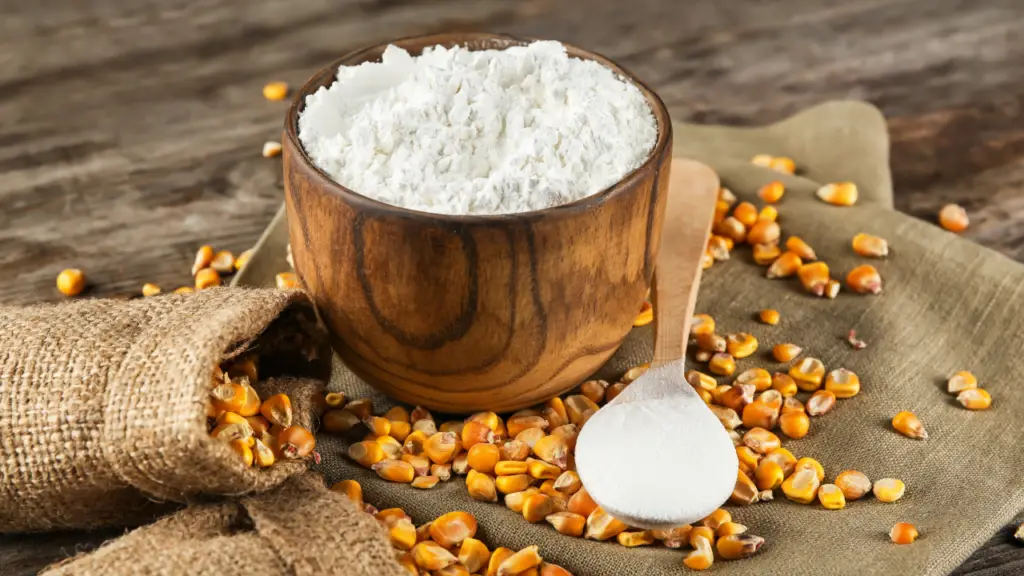
The final product is pure carbohydrate by nature, which is why it is a healthy choice. Ground cornstarch becomes a fine powder and is used for baking purposes.
Cornstarch is a famous thickening agent and works great with sauces, stews, soups, pie fillings, casseroles, and marinades. When cornstarch is added to water, the mixture becomes a transparent gel.
This property makes it an excellent choice for desserts, especially those with a fruit glaze. Chefs love using cornstarch to make gravy and pudding. Sometimes, you wish to separate the ingredients and keep them from sticking together both in recipes and manufacturing. Cornstarch is an excellent choice for this as well.
Using cornstarch is not that difficult, but you could do well with a few tips if it is your first time. For starters, never add cornstarch to a hot liquid. There is always a risk of lumping if you do this.
Add it to a cold liquid, and then mix it with a hot liquid if required. Before you cool the mixture, bring it to a full boil so that the cornstarch gelatinizes completely.
Additionally, cornstarch is twice as powerful a thickening agent as flour. So if you're thinking of replacing flour, only use half as much cornstarch.
There is a big misunderstanding regarding the terms cornstarch and cornflour, which has created the confusion that…
Are Cornstarch and Corn Flour the Same?
You will find comment sections and FAQs of several websites full of this question. So, don't worry if you think you're the only one not sure whether cornstarch and corn flour are the same.
Cornstarch is the white, hard part obtained by extracting and grinding the endosperm from a corn kernel. On the other hand, cornflour is obtained by grinding the whole kernel and not just the endosperm bit.
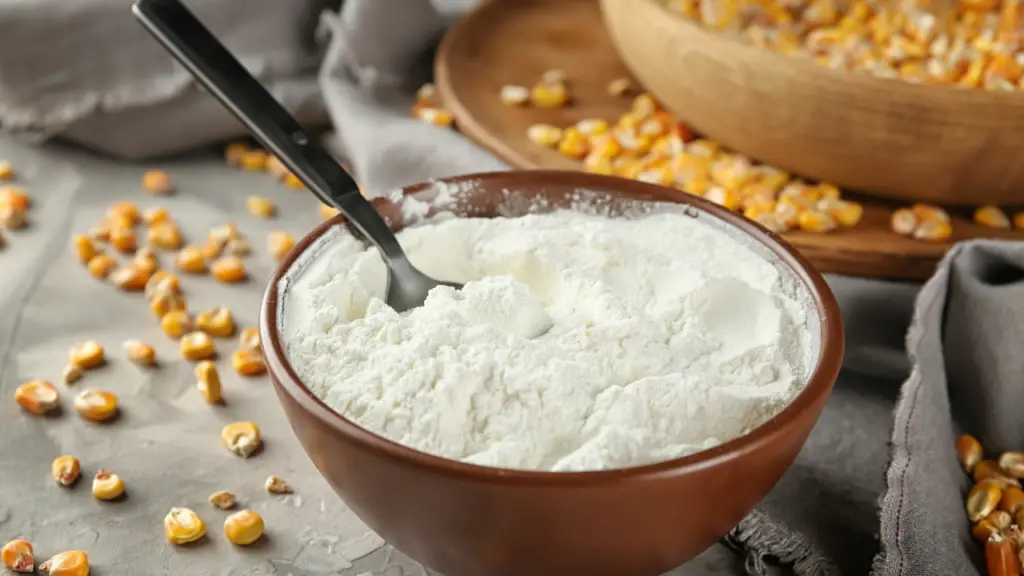
Hence, cornstarch only contains the carb or starch bit of the kernel. But, corn flour also contains the kernel's fat, fiber, and protein component and the starchy bit. Cornstarch is a very fine white powder having a chalky appearance, while corn flour has two types.
It can either be the yellow corn flour obtained from yellow corn or the white corn flour. The latter is made from white corn kernels and is less common.
But here is where all the confusion begins. In the UK, what people call “cornstarch” in the US is called “cornflour” in the UK. So, if someone uses the term “cornflour,” it's essentially the starch obtained from the corn kernels.
And just when you think that it's already confusing enough, it gets even worse. What the Americans call “cornflour” is called “maize flour” by the British.
So, to make it simple, cornstarch (US) = corn flour (UK) = the white starchy endosperm. But corn flour (US) = maize flour (UK) = the ground corn kernel.
In the following piece of the article, we will be addressing our main query, that…
Is There Gluten in Cornstarch?
It's not uncommon for people to confuse cornstarch with cornflour and assume that the former might contain gluten. Or, you might be a concerned celiac patient who wants to know whether cornstarch contains gluten or not.
Well, let's get to it. We've just discussed the predominant sources of gluten. It does not contain gluten since cornstarch is from corn kernels, not wheat, barley, or rye. So, it is safe to say that pure cornstarch is gluten-free.
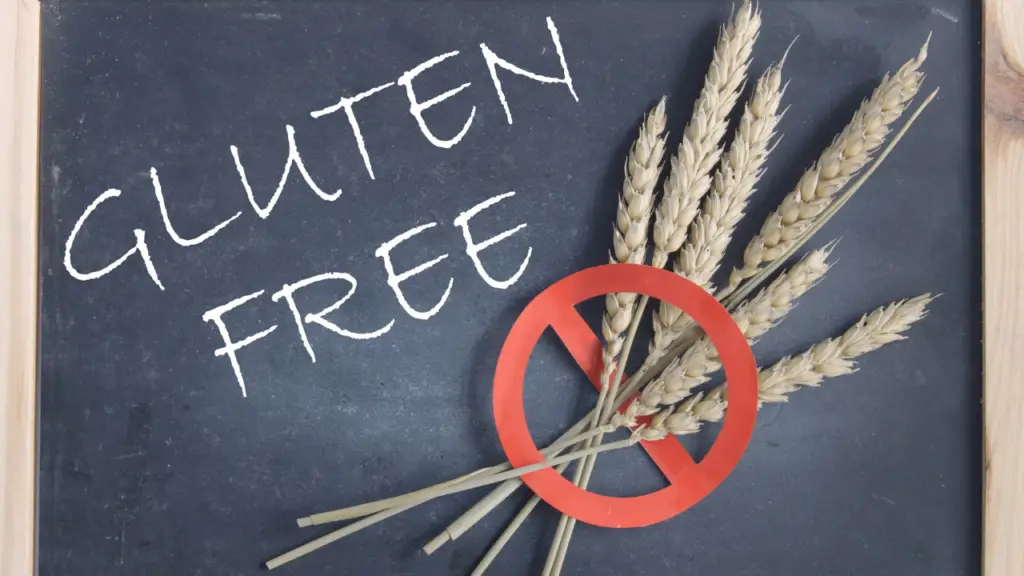
Cornstarch is often used as a substitute for wheat flour during gluten-free baking. Similarly, people following a gluten-free diet might feel hesitant while using modified cornstarch. But, just like ordinary cornstarch, modified cornstarch is also gluten-free since it is made from corn.
But the problem isn't the source of cornstarch. Just because it does not contain gluten naturally does not mean that every cornstarch is gluten-free. Many brands make cornstarch that is contaminated with gluten.
While making cornstarch, these brands use the same set of utensils that they use with gluten-containing products. This phenomenon is known as cross-contamination, in which gluten might adhere to the equipment and contaminate an otherwise gluten-free product.
For instance, some companies use cooking tools to make wheat flour: other brands store and process cornstarch in the same facilities as wheat, barley, or rye products. Hence, if you buy cornstarch instead of making it yourself, gluten contamination is always a risk unless it is marked gluten-free on the packaging.
Gluten-Free Cornstarch Brands
Cornstarch is a crucial ingredient in many recipes and possesses unique health benefits. For this reason, people following a gluten-free diet should not feel that cornstarch is not for them. Here are a few brands that make sure that the cornstarch you use has no traces of gluten:
Argo:
Argo Corn Starch has been a secret ingredient of various recipes across the USA for decades. The company makes sure that its product is not only MSG-free and gluten-free but also follows the strict kosher guidelines. Argo's baking powder, which contains cornstarch, is also gluten-free.
Bob's Red Mill:
Bob's Red Mill is a renowned brand, particularly famous for its gluten-free products. Their cornstarch contains less than 20 parts per million gluten and is vegan and certified kosher. They take all the necessary precautions and go the extra mile to make sure none of their gluten-free items get contaminated.
Clabber Girl:
Clabber Girl is a name in the industry you may have heard of and makes some of the finest baking goods. The company sells its cornstarch in several sizes and packaging. One of their variants is fortified with calcium.

But the similarity between them is that they are gluten-free and processed under the supervision of Orthodox Union Kosher. It is always best to be aware, though they use aluminum in their other products.
Hearth Club:
For generations, Hearth Club Corn Starch has been manufactured by Clabber Girl. Hearth Club has also made its way into the hearts of numerous people not only in the USA but across the globe. Hearth Club Corn Starch is certified gluten-free and does not contain trans-fat. Moreover, it is prepared as per the guidelines of Orthodox Union Kosher.
Rumford:
Are you looking for verified non-GMO gluten-free cornstarch made from low-moisture corn that fulfills your quantity and quality needs? Look no further than Rumford. Like Hearth Club, Rumford Corn Starch is also manufactured by Clabber Girl. No wonder it is prepared and processed under Orthodox Union Kosher supervision.
Hodgson Mill:
Hodgson Mill is one of the elite companies in the baking industry that make certified gluten-free products. Typically, for a product to be labeled as gluten-free, it has to have less than 20 parts per million of gluten.
Hodgson Mill's cornstarch is certified by the Celiac Support Association, meaning it contains less than five parts per million of gluten. Hodgson Mill's cornstarch is an excellent choice for celiac patients since it is non-GMO.
Chocolate Chip Cookies with Corn Starch Gluten-Free Recipe
Equipment
- Baking Sheet
Ingredients
- 8 tbsp salted butter
- 1/2 cup white sugar
- 1/4 cup brown sugar packed
- 1 egg room temperature
- t tsp vanilla
- 1 1/2 cups gluten-free flour preferably Bob's Red Mill 1:1 Gluten-Free Flour
- 1/2 tsp cornstarch
- 1/2 tsp baking soda
- 1/2 tsp kosher salt
- 1 cup chocolate chips
Instructions
- Preheat your oven to 350° Fahrenheit.
- Line a large baking sheet with parchment paper.
- Beat the butter and sugars with a beater attached to a stand mixer. A helpful tip: Beat the mixture until it gets creamy.
- Add vanilla and egg and beat the mixture. Some useful information: Beat the mixture on low for 15 seconds so that you don't overbeat the eggs. Otherwise, the cookies will become soft.
- Add baking soda, salt, cornstarch, and flour and beat the mixture. A helpful tip: Beat the mixture until it develops a crumbly texture.
- Add the chocolate chips and beat the mixture until it is just combined.
- Roll the dough together with your hands and shape it into a 1.5-inch balls.
- Make as many such balls with the dough as possible.
- Place the balls on the baking sheet. A helpful tip: Keep some space between the balls to allow the cookies to spread.
- Put them in the oven and let them bake. A helpful piece of advice: Bake the cookies for 10-12 minutes. Otherwise, they'll get overbaked.
- Take the cookies out. They will look puffy, with the edges slightly browned.
- After letting them rest on the baking sheet for 15 minutes, they will flatten.
- You can store them in an airtight container for up to a week.
- Enjoy!
Final Words
Cornstarch and even corn flour don't contain gluten; they're naturally gluten-free. However, it would be best to consider the factor of cross-contamination during manufacturing.
Opt for gluten-free if your health doesn't allow you to consume even the tiniest bit of gluten accidentally. Numerous brands, including those mentioned above, are either labeled or certified gluten-free.
Don't forget to try the delicious gluten-free chocolate chip cookie recipes using cornstarch!
Enjoy!
The owner of this website, HealthYeahLife.com, participates in the Amazon Services LLC Associates Program, an affiliate advertising program designed to allow sites to earn advertising fees by advertising and linking HealthYeahLife.com Review to Amazon properties including, but not limited to, amazon.com.

